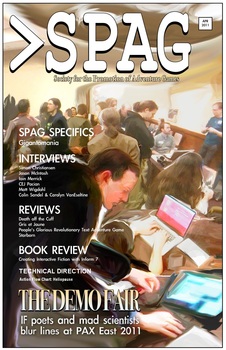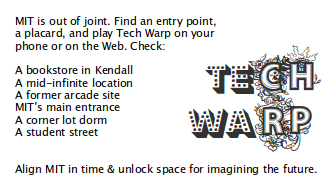Delightfully, the current issue of AI Magazine (Volume 30, number 3, Fall 2009) is on computational creativity. The number offers articles on the field overall; the history of workshops on the topic; computer models of creativity; and creative systems to generate music, stories and their tellings, moves of chess, and humor. The last article is computer-generated in high Hofstadter style.
Pablo Gervás’s contribution, “Computational Approaches to Storytelling and Creativity,” provides a clear introduction to the concept of creativity and the history of the term, analyzes the relevant features that storytelling systems can work upon, gives an outline of work in computational creativity so far, and continues with a capsule summary of several important storytelling systems. The last one of these is my system nn, which I renamed “Curveship” as I started focusing on a public release of the software.
This is a preview of
Curveship in AI Magazine
.
Read the full post.



